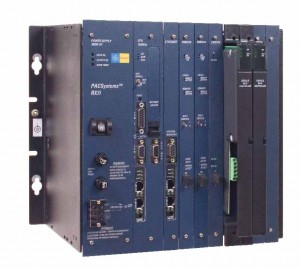
Hardware Comparison: RX7I vs RX3I Series Overview
For the last two decades, GE's PACSystems RX3i and RX7i controllers have served a wide range of automation needs. The RX3i controller is designed for smaller-scale applications, delivering high functionality in a compact and cost-effective package. In contrast, the RX7i is a high-performance controller tailored to mid-to-large-scale applications, with robust memory, open architecture, and extensive processing capabilities.
Both controllers rely on GE's Proficy Machine Edition (PME) software for programming, diagnostics, and hardware configuration. PME offers an intuitive graphical interface with drag-and-drop tools and supports multiple programming languages including Ladder Logic, Structured Text, C, and Function Block Diagram.
System Architecture and Operation
The RX7i uses a VME-based backplane architecture, while the RX3i uses PCI-based architecture. This design allows smooth migration from legacy GE 90-70 systems by offering interchangeable I/O modules and simplified logic conversion.
Both systems execute logic in a structured sweep cycle: the CPU reads input data, processes the program, and then writes outputs ensuring synchronized control and deterministic performance.
CPU and Memory Specifications
| Feature | RX7i | RX3i |
|---|---|---|
| Processor | 300 MHz Celeron to 1.8 GHz Pentium M | 300 MHz Celeron to 1.2 GHz AMD Quad-Core |
| Memory | 10 MB to 64 MB | 2 MB to 64 MB |
| Programming Software | Proficy Machine Edition | Proficy Machine Edition |
Communication Capabilities
Both RX7i and RX3i provide robust communication support:
-
RX7i: Dual Ethernet (RJ45) ports supporting 10/100 Mbps, serial ports for MODBUS RTU/ASCII, and protocol support for EGD, MODBUS TCP, and HART passthrough.
-
RX3i: Similar protocol support plus additional Ethernet port acting as a switch, OPC UA, DNP3, PROFINET, and support for remote connectivity and Industrial IoT.
Chassis and Expansion
| Feature | RX7i | RX3i |
| Slots | 9 to 17 | 7 to 16 (base), 5 & 10 (expansion) |
| Hot-Swapping | No | Yes |
| I/O Support | 64-point digital, expanded analog | 32-point digital, 16 analog out, same analog in |
Power Supply Units
-
RX7i: AC/DC power options, low and high capacity (up to 350W), forced-air cooling for high power models, with fault protections (over-voltage, over-current, thermal).
-
RX3i: Auto-ranging plug-in power modules with advanced diagnostics and redundancy support.
Redundancy and Reliability
Both RX7i and RX3i offer hot standby CPU redundancy:
-
RX7i: CRE series includes built-in redundancy, CPE series does not. Compatible with different CPU modules of the same class.
-
RX3i: Supports hot-swappable modules during redundant operation, increasing uptime and ease of maintenance.
Advanced Features and IIoT Readiness
-
RX3i CPE305/310/330/440 support OPC UA, MRP, PNSR, and wide temperature operation (-40°C to 70°C).
-
RX7i supports high-speed I/O, web server via embedded Ethernet (FTP, HTTP), and extended remote capabilities up to 7500 ft.
Conclusion Both RX3i and RX7i deliver high-speed performance and robust automation capabilities. RX7i, though now approaching end of-life, remains a proven solution for large-scale systems. RX3i continues to evolve with superior communication options, redundancy, hot-swappable modules, and Industrial IoT integration making it the preferred controller for future-ready automation.
Need Help Choosing the Right Controller? Contact our automation specialists today.
PLG Automation
Email: sales@plgautomation.com
Phone: 800-906-9271
